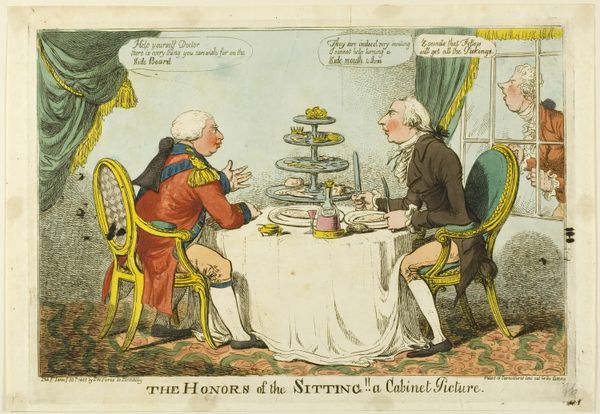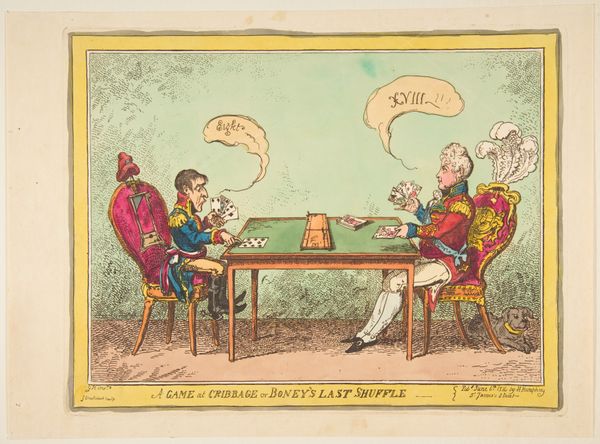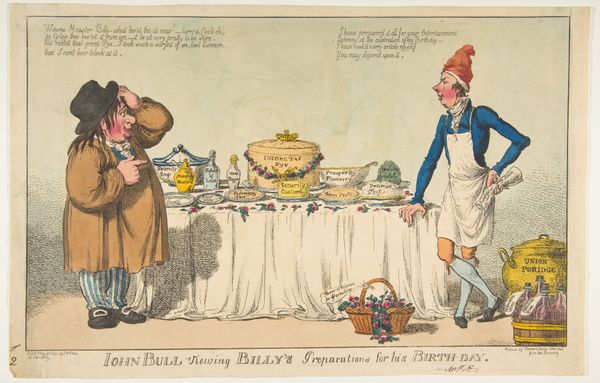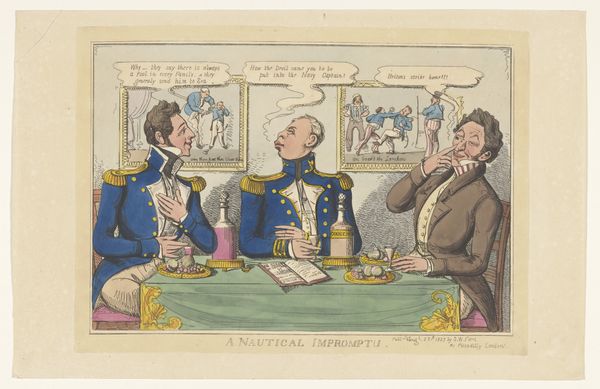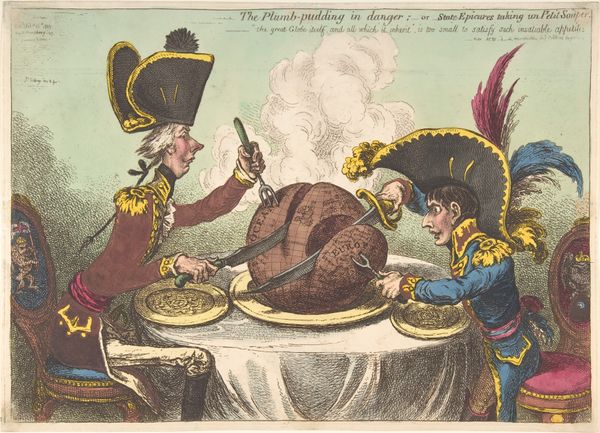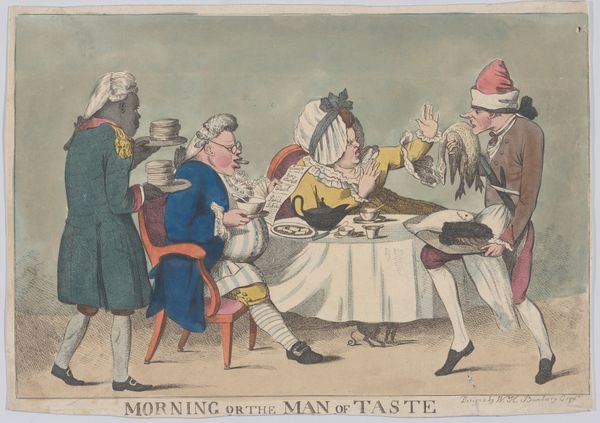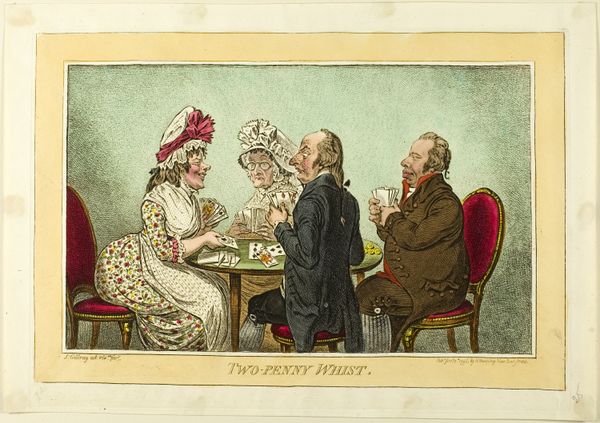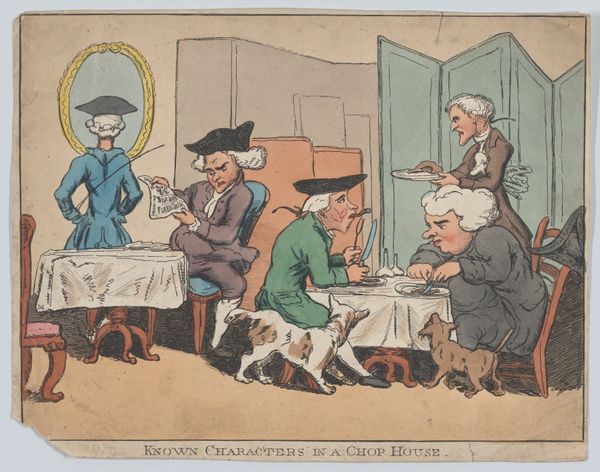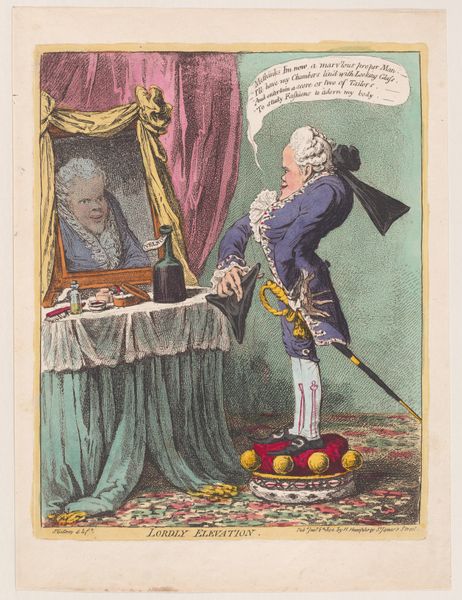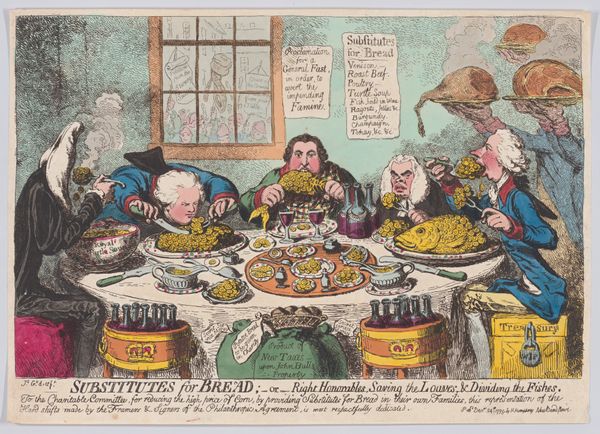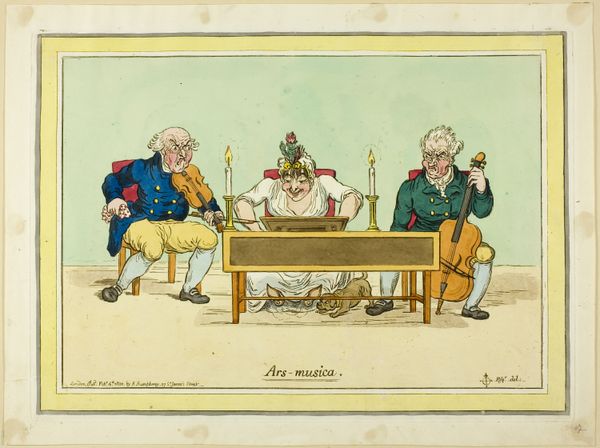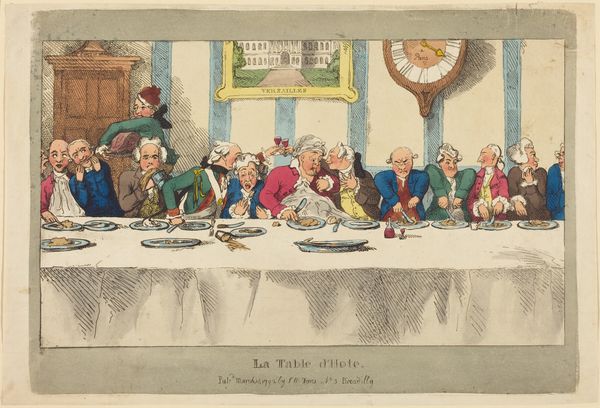
drawing, print
#
drawing
# print
#
caricature
#
coloured pencil
#
men
#
genre-painting
Dimensions: sheet: 9 1/2 x 13 3/4 in. (24.2 x 34.9 cm)
Copyright: Public Domain
Editor: So, this print is titled "The Honors of the Sitting! A Cabinet Picture," made in 1805 by Charles Williams. The colors are quite vibrant, and the figures are definitely caricatures. It almost looks like a political commentary... How do you see it? Curator: Absolutely. Think about the print as a form of public discourse, a way to visualize and critique the political elites of the time. This print's satirical style tells us that its primary role would have been commenting on social culture in London. Who do you think the men at the table represent? Editor: Hmm, I'm not sure. High-ranking officials, maybe, given the title and the lavish setting? Curator: Precisely! The lavish details, from the over-the-top tiered dessert stand to the fine china, underscore their privileged position. Williams uses such imagery to suggest corruption and self-interest. Also notice the phrases that have been added to the drawing: "Help yourself, Doctor. There is everything you can wish for on the side Board." Does this not suggest that individuals, namely, in Parliament, took bribes in exchange for votes? Editor: It definitely feels like a dig at the political system. But if the figures are indeed greedy elites, what's with the third man who peers through the window? Curator: Another member of the court; I'd even venture to guess a dissenting voice that exists within the larger administration. Remember, these prints weren't just passive reflections of society; they actively participated in shaping public opinion and creating or even demolishing certain members. This caricature might have been used to influence votes and policies. Editor: That’s fascinating! It’s more than just a funny drawing; it’s a form of political action. I’ll certainly see these kinds of images differently moving forward. Curator: Indeed. By considering the historical context and the role of prints in public life, we gain a richer understanding of not just the artwork but the society that produced and consumed it.
Comments
No comments
Be the first to comment and join the conversation on the ultimate creative platform.
